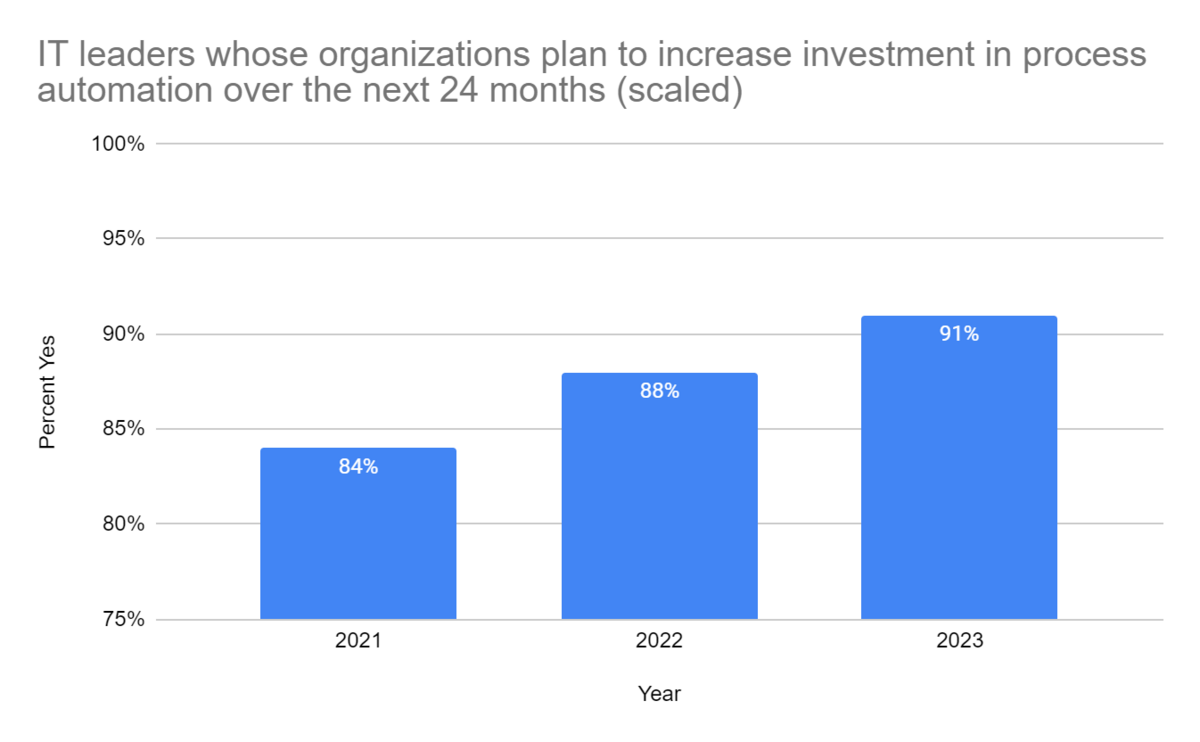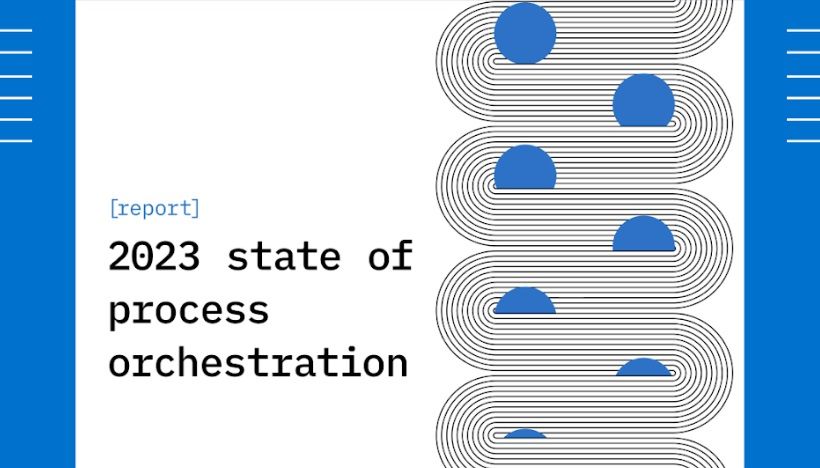In this report, learn about the challenges of process automation faced by IT leaders today, why process orchestration can help and how you can get started with it today.
Process automation is more important than ever, with the vast majority of IT decision makers saying they have recently invested in process automation and will continue to increase investment over the next two years. Yet even as the need for process automation continues to grow, a new challenge is emerging alongside it: how can IT leaders manage the complex automation projects they develop?
Our latest survey, the State of Process Orchestration 2023, sets out to answer this and many other key questions facing businesses today when it comes to process automation and orchestration. This comprehensive survey lays out the current state of the industry and makes it clear where IT leaders think it is going.
An industry-leading survey
The State of Process Orchestration 2023 is among the largest and most complete surveys of its kind, with over 750 respondents from multiple countries across multiple continents. Continuing in the tradition of our previous industry-leading reports, the State of Process Automation 2022 and the State of Process Automation 2020, this survey asked a select set of IT decision makers and leaders a detailed question set about the state of process automation and orchestration: past, present, and future.
The survey was limited to companies with 250 or more employees as the adoption of complex process automation is most common in organizations of this size. All respondents were involved with process automation at their company. Regina Corso Consulting, an independent third-party agency, was commissioned to conduct the survey.
Why it matters
As process automation grows rapidly, process orchestration is emerging just as quickly as a key area of investment for businesses. At the same time, many decision makers report they are still grappling with effective implementation of automation processes that have great potential for critical time- and cost-savings, but are becoming increasingly complex. This report will bring needed clarity and fresh ideas to anyone interested in creating or further developing a process orchestration solution in their organization.
The State of Process Orchestration 2023 also gives rare insight into the wider state of the market. Particularly in this time of global economic uncertainty, business leaders are looking for guidance on what the future will bring, and just as crucially, what their peers and competitors are thinking about and working on today.
The takeaway: Process Orchestration can reduce complexity
Most IT leaders are looking to process orchestration solutions as a solution to managing the complexity.
What is process orchestration?
Process orchestration coordinates the various moving parts (or endpoints) of a business process, and sometimes even ties multiple processes together. Process orchestration helps you work with the people, systems, and devices you already have – while achieving even the most ambitious goals around end-to-end process automation.
Obstacles to process orchestration
Process orchestration has many benefits, but there are challenges to adoption, starting with alignment between IT teams and business leaders. Despite these obstacles, the survey makes it clear that IT leaders know they need to get a better handle on their process automation, with most agreeing that they need better tools to manage how processes intersect.
See the full report for all of the top obstacles decision makers reported facing.
Moving forward with process orchestration
Organizations know there is significant value in process automation, and this interest is only growing. An overwhelming majority – 91% – of respondents say their organization plans to increase investment in process automation over the next two years, a number that has grown in each year of our survey.

Despite the interest, it can feel difficult for organizations to take the first step. How do you get started? The survey report lays out four strategies any business can take to begin their journey to process orchestration. Check out the full survey report for more details on each of these paths.
Join us for a webinar to learn more
Please join us for a webinar on February 15, Overcoming Obstacles to Automation Challenges, as we break down the report and spotlight key trends to be aware of and pitfalls to avoid. The webinar will feature a panel including Camunda Chief Technologist and co-founder Bernd Ruecker and Regina Corso of Regina Corso consulting, and will be moderated by Camunda Product Marketing Manager Shane Ernst.
Download the survey results today
This is the time of year to consider your goals for 2023, including the role process orchestration may be able to play in achieving them. To learn more about the state of process orchestration in 2023, why IT leaders think it’s important and how you can get started today, download the report for free today.

